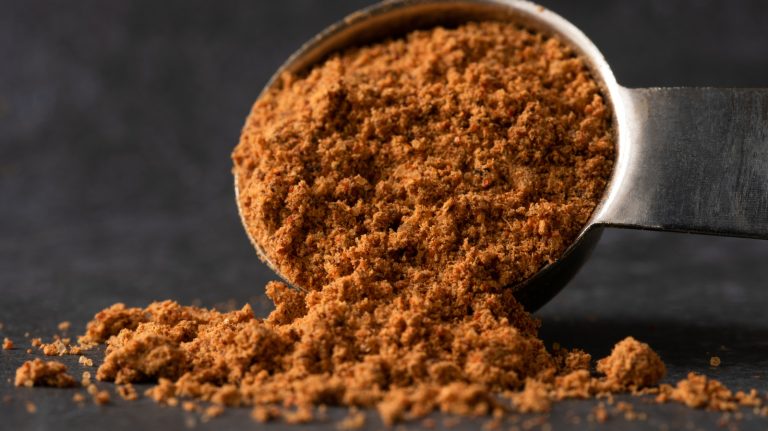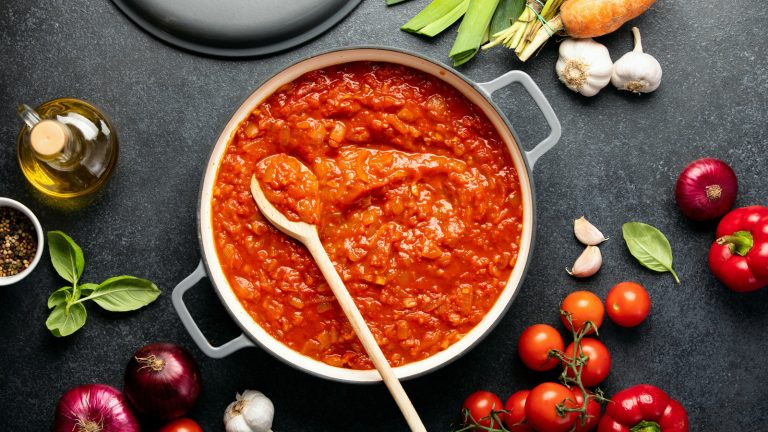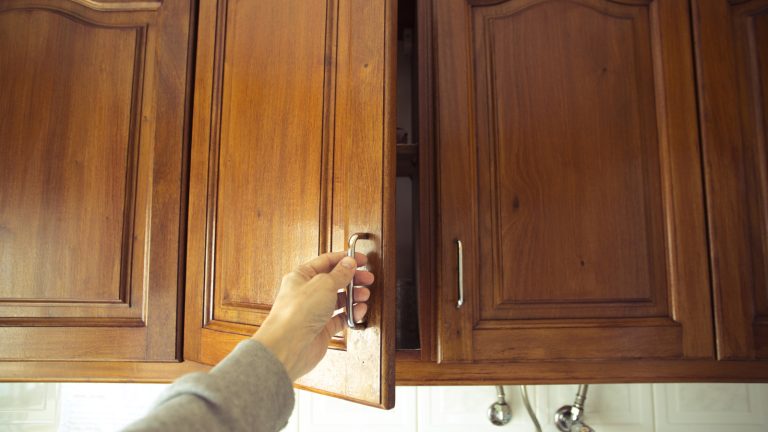There is something pleasantly nostalgic about a vintage dessert. Possibly gelatinous, often a little bit over the top, and most definitely eye-catching, the unique desserts from the 19th and 20th centuries carry a sense of flair that tells the story of America’s evolving food culture.
As the country entered the age of mass production and more processed ingredients, dessert trends followed suit. The rise of the American housewife brought new social pressures to produce something innovative and fun in the kitchen for new community events like neighborhood potlucks. At the same time, the Great Depression and wartime rationing forced home cooks to stretch ingredients and be resourceful, causing them to get creative about the ways in which they stretched their ingredients.
While some vintage desserts do need to be left in the past, many of these fun and delicious vintage desserts are in need of a comeback, with perhaps a modern twist. Here are vintage dessert fads we think should make a delicious return.
Dessert bars
Picture a warm summer evening at a bake sale. Around you, there are no stacked cakes or even pies necessarily, but instead there are many varieties of dessert bars. Reaching their peak in the mid-20th century, there was nothing better to bring to a function than a container packed full of dessert bars. Compact, portable, and easy to make in big batches, dessert bars were the perfect thing to roll up to a function with.
In fact, let’s bring back this vintage dessert fad because they are still perfect for casual, communal events today. Bars travel well, slice easily for sharing, and can be eaten by hand (no forks required). They are also incredibly customizable. Classic favorites like lemon bars or seven-layer bars can be reimagined with new flavors or dietary swaps. In fact, just about any dessert can be “bar-ified.” Some fun renditions could include s’mores bars, cheesecake bars, or even a red velvet cake bar. Whatever the occasion, dessert bars make it easy to show up with something sweet, simple, and nostalgic with a modern edge.
Graham cracker crust
We love a traditional pie crust, but they can require time and technique to truly master. The solution to this is the vintage, graham cracker crust. A product of America’s industrial food boom, the graham cracker was originally invented in the mid-19th century as a health food, made with whole grains and minimal sugar. These original crackers were low in sugar and emphasized whole grains, something that was very inventive and countered the typical trends of this period. Over the years, graham crackers have changed a lot, but we think it is time for them to make a comeback.
To make the crust, simply mix crushed graham crackers with melted butter and a bit of sugar, press the mixture into a pan, and chill it. This no-fail recipe is perfect for baking pros and beginners alike. And, perfectly sweet and just a little bit crunchy, it is not only easy to make, but is totally delicious.
Graham cracker crusts are best used for chilled, no-bake desserts, super creamy desserts, and they allow the baker creative liberty. They are resilient as long as the product does not need to be too heavily baked or is too dense. Depending on what is being made, they can be baked or not baked. Because of their ease and variety, these crusts truly do need to make a comeback.
Jell-O desserts
Few foods scream “vintage dessert” louder than Jell-O. Bright, bouncy, and wildly adaptable, Jell-O was a staple of 20th-century American kitchens, thanks in large part to its convenience, affordability, and fun colors. The rise of Jell-o as a beloved American kitchen ingredient corresponded with the rise in home economics in the early 20th century, when domestic processes with the rise of technology were reformed to embrace efficiency and order. In 1902, a campaign launched by the Jell-o company even called it “America’s most favorite dessert,” exemplifying how deeply embedded it was in the food community. A fast, cost-effective, and tidy dessert, Jell-O checked off many boxes in the modern housewife’s kitchen. It could be used to encase leftovers to keep them fresh, already included sugar so they were a cost-effective sweet, and could be molded into fun, clean, but extravagant-looking desserts.
And what’s not to love about an efficient, budget-friendly, and fancy dessert today? Jell-O checks off a lot of our boxes, especially when given a modern spin. Consider bringing Jell-O back into your kitchen in the form of a Broken Glass Cake. This “cake” involves topping a graham cracker crust with a whipped cream mixture that has had Jell-O cubes and thickened pineapple juice stirred in (pictured above). It is whimsical, nostalgic, and surprisingly elegant. Do not underestimate the potential of Jell-O.
Sheet cakes
In the golden age of potlucks and community gatherings, one dessert takes the prize: the sheet cake. While tall, layered cakes might have appeared to steal the spotlight, sheet cakes quietly earned their place as the ultimate party dessert because of their ease to bake, decorate, transport, and slice.
There is no reason this humble classic should have ever fallen out of fashion. Not only are they simple to make, given that they are baked and decorated in a single layer, they are also easy to transport, quick to cut up and serve, endlessly customizable, and perfect for feeding big crowds. The best part is that sheet cakes can be frozen and then pulled out later for a quick dessert in a pinch. There is truly nothing else easier, versatile, and unexpectedly elegant than the sheet cake, and we are totally here for it.
One of the most famous, vintage sheet cakes is the Texas funeral cake, which is a chocolate sheet cake topped with a fudgy, chocolate frosting and pecans. A classic, this one is worthy of a comeback. But, sheet cakes can easily be given a modern revamp depending on how you decorate them. Skip the heavy frosting swirls and opt for light glazes, edible flowers, or minimalist piping for a contemporary look.
Meringue desserts
Though the early and mid-20th century emphasized convenience and mass production, it was also an era that celebrated extravagance, especially in the dessert department. This is where the meringue dessert fad comes in. A meringue might not be the easiest dessert to pull out, but on a special occasion, it is one that is sure to impress everyone.
The origins of meringue are a bit hazy, but the general consensus is that meringue in its classic dessert form likely emerged out of Europe in the 18th century from the pastry art community. Meringue desserts eventually made their way to America beginning around the end of the 19th century, as the influence of French pastry chefs trickled into the United States. Baked Alaska, the famous ice cream treat covered in a layer of torched meringue, was invented in a New York City restaurant at the end of the 1800s. Lemon meringue pie emerged around a similar time, showing up in cookbooks around the turn of the century.
Truly an act of embellishment, these meringue desserts continued to show off in America throughout the 20th century — and for good reason. Despite being a little bit of work to make, they are beautifully elegant, and perfect for a special occasion. With a rise in other international influences and revivals in traditional techniques, it is time for meringue to have another moment to shine. For a modern twist, try topping a meringue with whipped cream, fresh fruit, and edible flowers for a stunning result. Doesn’t it feel good to master a new talent like making meringue?
Pineapple desserts
When the beach is just a little too far away, pineapple desserts can bring us a taste of paradise. This is what dessert lovers throughout the 20th century must have been thinking, as pineapple desserts took the United States by storm back then. From pineapple upside-down cake, to pineapple Jell-O molds, to pineapple chiffon pie, pineapple became the centerpiece of countless vintage desserts.
Pineapples were introduced to Hawaii likely sometime in the early 19th century. Once a rare item, the delicious fruit was a luxury item until they were able to be cultivated and mass produced. In the early 20th century, James Dole founded the Hawaiian Pineapple Company and started a pineapple revolution in the United States. Dole developed a system that automated the peeling, coring, and slicing of pineapples enabling them to get canned and distributed to the continental United States with ease. His innovations in canning transformed the fruit into an everyday staple for American households, ushering in an age of pineapple-based sweets that we think should make a comeback.
Today, pineapple still holds that perfect balance of sweet and tart, and it is time to bring this vintage dessert fad back. To modernize these classics, consider using fresh pineapple for a bolder taste and texture. Or, take loose inspiration from the tropical flavor and substitute another fresh fruit that is in season. Mangos, stone fruits, or even berries offer a delicious twist on this slightly tart and robust fruit you’re probably craving now after reading all about it.
Desserts made with condiments
Nothing says vintage innovation like putting mayonnaise in your cake. While it may sound odd, condiment-based desserts reflect a time when bakers got creative with pantry staples, especially during the Great Depression and World War II, when rationing made ingredients like eggs and oil much harder to come by. Most condiments are incredibly shelf stable, and they are budget ingredients that can serve to substitute many base baking ingredients. And, though you may not think it at first, condiments such as mayonnaise surprisingly make sense in a lot of desserts.
Take the chocolate mayonnaise cake, where mayonnaise replaces both eggs and oil for a surprisingly moist crumb. Or tomato soup cake, which uses Campbell’s canned soup to deliver sweetness, spice, and richness in one go. Even old-fashioned vinegar pie, which uses vinegar to mimic the brightness of citrus, is rooted in this inventive tradition.
All three of these vintage, condiment desserts gained popularity during the depression period. It is never a bad time to save on groceries, especially nowadays, and this vintage dessert fad definitely deserves a comeback. Consider modernizing them by adding additional spices to give them a more complex flavor, or a light frosting or whipped topping to add a fresh flare.
Instant puddings
For many, instant pudding is a nostalgic treat. This vintage dessert fad began to take hold in the United States in the early to mid-20th century, but it has older roots. Adapted from old pudding traditions dating back to the wealthy elite during the Middle Ages, our traditional version of instant pudding most recently gained popularity with the rise of mass production. Culinary inventors discovered that you could make a quick pudding by combining sugar, modified corn starch, flavoring, and then milk. By the 1940s, Jell-O had co-oped this idea and began popularizing instant pudding across America.
This incredibly easy dessert deserves a comeback not only because it is delicious in its traditional form, but also because it is such an incredible culinary innovation. If instant pudding is not your thing, consider modernizing this vintage fad by adding instant pudding as an ingredient in other desserts. Instant pudding mix works in a variety of ways to enhance the flavor and texture of various baked goods. The sugar in instant pudding attracts moisture, and corn starch tenderizes baked goods and stabilizes any whipped goods. To tone down its artificial edge, pair instant pudding with natural flavors like vanilla bean, espresso, rum, or brandy. Whether used on its own or as a secret ingredient, this humble mix deserves a second chance.
Icebox cakes
The beloved icebox cake is the dessert hero for when your oven is broken, when simply can’t be bothered to bake, or if it’s too hot to fire up your oven or stove. These cakes first appeared in the 1920s via a recipe printed on the side of a mass-produced cookie box. Defined by their layering of crisp cookies, whipped cream or custard, and whatever toppings you fancy, icebox cakes come in endless variety.
The 20th-century American housewives loved icebox cakes for the same reasons we should bring them back today: They’re effortless, adaptable, and impressive. Just layer cookies and cream, chill for a few hours, and let the cookies turn into a delicious cake-like texture. In addition to being super easy, icebox cakes also make the perfect summer dessert because they are served cold. Important for us to modernize, icebox cakes can be customized and transformed for any occasion. Traditional cookie icebox cakes can step aside for berry-based icebox cakes, tiramisu ones, or fun icebox shortcakes.
Cold, layered desserts
“The more the merrier” applied to community gatherings and dessert tables in the 20th century. One vintage dessert fad was the embrace of putting ingredients together, often in visible layers, that resulted in a whole new creation. One example of this is the classic ice cream sundae, combining ice cream, chocolate sauce, nuts, and cherries, all layered and served in a glass vessel to show it off. From the English trifle (though please lose the meat Rachel mistakenly added to it in “Friends”), to the strawberry parfait, to ice cream sundaes, to classic banana pudding, the 20th century was all about trying to put things together and showing off in the process.
This vintage dessert fad is already making a comeback in the form of naked cakes and deconstructed parfaits. To modernize these desserts, consider switching up the vessel they’re served in. A plain, sleek glass for a parfait or plate to feature a deconstructed trifle can make this into a modern, classy vibe.
Sweet salads
In mid-20th-century America, the term salad stretched far beyond leafy greens. Sweet salads, like ambrosia, watergate, or strawberry-pretzel Jell-O, were all the hype. Typically made with canned fruit (often pineapple), whipped cream or Cool Whip, and texture-rich ingredients like marshmallows or Jell-O, these “salads” were whimsical, sweet, and strangely luxurious. The salads were once considered luxury items, and originated out of a desire to feature fun fruit ingredients such as pineapple and coconut. Over time, though, with the rise of mass production, they became more popular, and additional ingredients such as marshmallows were added.
While it may seem difficult to modernize such an insane vintage dessert fad, these salads deserve a comeback. Consider switching up the textures to add more three-dimensional flare. This can be done by toasting the coconut in an ambrosia salad, opting for fresh fruit instead of canned, and plating this salad in layers so there is some differentiation. Or make a candy salad that you’ve probably seen talk of online by unwrapping and dumping your favorite candies in a bowl and giving it a mix.
Whimsical hand-held treats
Vintage desserts weren’t just about the flavor: They were about fun. One especially quintessential fad was to make desserts whimsical and almost child-like in design. Made to perfectly fit in a school lunch box, or be held in a child’s hand, vintage desserts like whoopie pie and rice Krispies treats were the perfect fun-sized sweet package.
With the rise of bento box culture and aesthetically-packed lunches, it is the perfect time to bring this vintage dessert fad back. These lunch-box-sized treats are portable, easy to make, and add a little fun to your life. What’s not to love? Consider modernizing these classic, vintage treats by upping the flavor complexity. Rice Krispies treats are generally pretty sweet and one-dimensional. Adding a salty element like miso or warm spices can give it an extra layer of complexity. Whoopie pies can be reimagined to be flavors other than chocolate, like earl gray tea or espresso. Maintaining their fun-sized, playful energy but making them more sophisticated can remake this vintage dessert fad into a trendy food once again.





